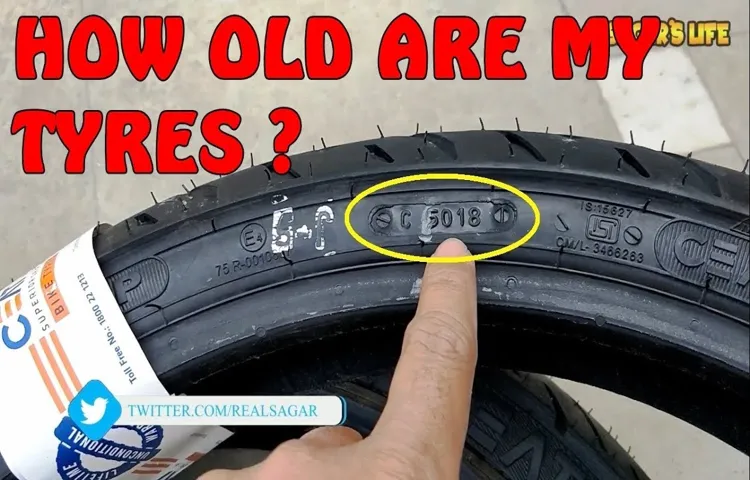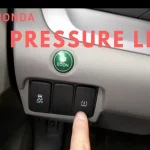Have you ever wondered about the age of your tires? Knowing when your tires were manufactured is important because tires can age and become unsafe, even if they have plenty of tread left. To ensure the safety of your vehicle and its passengers, it’s essential to identify the manufacture date on your tires. But, how can you do that? Don’t worry, this blog post will help you figure it all out! The manufacture date on a tire may not be immediately obvious.
It’s not usually printed in a typical date format, and it can be difficult to locate. But, with a little bit of knowledge, you can find out when your tires were made. The code that reveals the date of manufacture is usually located on the sidewall of the tire, and it contains a four-digit number after the acronym “DOT”.
The first two digits represent the week of manufacture, while the last two digits represent the year. For example, if the code reads “DOT 0219”, it means the tire was made in the second week of 201 However, this is not the only tire code you’ll find on your car.
Different codes could mean different information about your car’s tires, and this is where things can get confusing. So, if you’re unsure about how to decode the manufacture date of your tires, this blog post will guide you through the process. We’ll also share some tips on what to do if you discover that your tires are old and need to be replaced.
Don’t wait until it’s too late – read on and find out everything you need to know about identifying the manufacture date on your tires!
Table of Contents
Location of the Date Code
If you want to know the manufacturing date of a tire, you need to look for the date code which is printed on the sidewall of the tire. The date code is a four-digit number that represents the week and the year in which the tire was manufactured. The first two digits of the code indicate the week of production, while the last two digits indicate the year of production.
For example, if the date code is 2518, it means that the tire was manufactured in the 25th week of 201 Checking the date code on your tires is important because it can help you determine if your tires are still safe to use. As a general rule, tires over six years old should be replaced even if they still appear to be in good condition.
By checking the tire date code, you can ensure that you are using safe and reliable tires on your vehicle.
Explanation of Tire Date Code
The date code on your tire is an important element to understand, as it can tell you the age of your tire and when it should be replaced. Luckily, finding the date code is simple. Look for a series of numbers and letters on the tire sidewall, usually near the edge of the rim.
The code is typically four digits, with the first two representing the week of manufacture and the final two representing the year. For example, a code of “2715” would indicate that the tire was manufactured in the 27th week of 201 It’s vital to keep an eye on the age of your tires, as they can become unsafe and unreliable as they age, even if they have plenty of tread left.
Remember, your safety is the top priority, and keeping your tires in good condition is one of the most crucial steps you can take towards ensuring it.

Deciphering the Date Code
If you’ve ever tried to decipher the date code on your product, you know it can be a challenge. The location of the code itself can vary from product to product, so it’s important to know where to look. Generally, you can find the date code in one of two places: on the product itself, or on the packaging.
If it’s on the product, it may be on the bottom, side, or back. Sometimes, it’s even etched into the product itself. On the other hand, if the date code is on the packaging, it might be on the side, bottom, or even the label.
In some cases, you may need to peel back a label or open a flap to find the code. No matter where the code is located, it’s essential to find it if you want to determine the freshness of your product.
Understanding the Date Code Format
If you’re unsure how to tell the manufacture date on a tire, it’s actually quite simple. Look for the code on the sidewall of the tire that starts with “DOT.” This is the Department of Transportation code that identifies the manufacturer, plant, and date of production.
The date is represented by four digits, with the first two indicating the week and the last two indicating the year. For example, if the code reads “DOT XXXX XXX 0115,” the tire was made in the first week of 201 It’s important to note that tires have a lifespan of six years, so if you’re purchasing a used tire, check the date code to ensure it’s still safe to use.
Week and Year Code
The week and year code is a date format used to indicate the year and the week number of a particular year. This format is commonly used in logistics and supply chain management to identify the week when a product was manufactured or shipped. The code is structured as YYWW, with YY indicating the year and WW indicating the week number within that year.
For example, a product with the code 2250 would have been produced or shipped on the 50th week of 202 This code is essential in tracking inventory, ensuring timely deliveries, and monitoring the shelf-life of products. Using this code, manufacturers and logistics companies can ensure that their operations run efficiently and smoothly.
Reading the DOT Number
If you’re curious about the DOT number found on your tires, you might be wondering how to decode the date code. The DOT number is actually a combination of letters and numbers, and the last four digits represent the manufacturing date of the tire. The first two digits represent the week of the year, while the last two digits represent the year the tire was manufactured.
For example, if the last four digits on the DOT number are 3415, the tire was manufactured in the 34th week of 201 This information is crucial because tires can age and degrade over time, so it’s essential to know how old your tires are for safety purposes. It’s recommended to replace your tires after six years, regardless of the amount of wear or miles driven.
Understanding the date code format can help you make informed decisions about tire safety and maintenance.
Calculating the Tire’s Age
When it comes to figuring out the age of a tire, the date code format is key. This code is usually found on the tire’s sidewall and consists of a four-digit number, with the first two digits indicating the week of manufacture and the second two digits indicating the year. For example, a tire with the code “2617” was manufactured in the 26th week of 201
It’s important to note that tires typically have a lifespan of around six years, so if you’re checking the age of a used tire, be sure to take this into account. Additionally, it’s a good idea to check the condition of the tire itself, as a well-aged tire in good condition can still be safe to use, while a newer tire that has been poorly maintained may pose a serious risk on the road.
Importance of Checking Tire Age
As a car owner, it’s essential to keep your tires in good condition to ensure your safety on the road. One important thing to check is the age of your tires. Knowing how to tell the manufacture date on a tire is crucial because tires can age even if they haven’t been used much.
Over time, the rubber compound can deteriorate, which can lead to a blowout, particularly when driving at high speeds. To determine the tire’s age, check the DOT code on the sidewall. The last four digits indicate when the tire was manufactured.
For instance, 1107 means the 11th week in 200 If your tires are more than six years old or have any visible cracking, it’s time to replace them, even if they have sufficient tread depth. Being aware of your tire’s age and regularly checking them can help prevent accidents and keep you safe on the road.
Safety Concerns
As a driver, you might not think twice about the age of your tires. However, it is crucial to remember that the age of your tires plays a significant role in ensuring your safety on the road. Tires can deteriorate over time, regardless of how much they have been used or how much tread remains.
Factors such as temperature, storage conditions, and wear and tear can all contribute to the aging process of your tires. It is recommended that you replace your tires every six to ten years, depending on the manufacturer’s guidelines. So, before embarking on a long road trip, take a moment to check the age of your tires.
It could be the difference between a smooth ride and a dangerous situation. Remember, your tires are the only point of contact between your vehicle and the road – keep them in good condition to keep yourself safe.
Economic Implications
Tire age may seem like a minor detail when it comes to vehicle maintenance, but it can have significant economic implications. Checking the age of your tires is crucial because old tires can pose safety risks and lead to costly repairs or accidents. As tires age, they dry out and lose their elasticity, causing them to crack and become brittle.
This can cause blowouts or punctures while driving, putting both the driver and passengers at risk. In addition to safety concerns, old tires can also reduce fuel efficiency and increase tire wear, resulting in higher costs for fuel and tire replacements. It is recommended that tires be replaced every six years, regardless of the amount of tread remaining.
In the long run, regular maintenance of your car’s tires can save you money while keeping you and your passengers safe on the road.
Conclusion and Final Thoughts
In conclusion, deciphering the age of a tire may seem like a daunting task, but with a little knowledge and investigation, it’s easier than you think. Remember the DOT code on the sidewall, look for a four-digit number following the DOT letters, and subtract that number from the current year. Voila! You now know the manufacture date of your tire.
It’s like a hidden message waiting to be decoded, just like a tire’s purpose to deliver a smooth ride and keep you moving forward…
literally.”
FAQs
What are the numbers stamped on the side of a tire?
The numbers stamped on the side of a tire are the DOT code, which includes the manufacture date.
How can I interpret the DOT code to determine the manufacture date of my tire?
The last four digits of the DOT code indicate the manufacture date, with the first two digits representing the week and the second two representing the year.
Can I still use a tire that is past its manufacture date?
It is not recommended to use a tire that is more than six years old, regardless of its condition or tread depth.
Do all tires have a DOT code and manufacture date stamped on them?
Yes, all tires sold in the United States are required to have a DOT code and manufacture date stamped on them.
How can I check the manufacture date of a tire if the DOT code is not clearly visible?
You can contact the manufacturer of the tire or bring it to a professional tire shop for assistance in determining the manufacture date.
Is it possible for tires to have a different manufacture date than the vehicle they are installed on?
Yes, it is common for tires to be replaced at different times and for newer tires to be installed on older vehicles.
Can a tire’s performance be affected by its manufacture date?
Yes, older tires may be more susceptible to dry rot, cracking, and other age-related issues that can affect their performance and safety.



